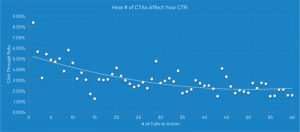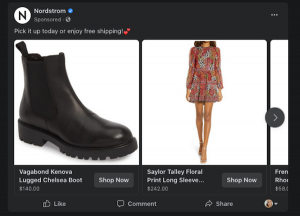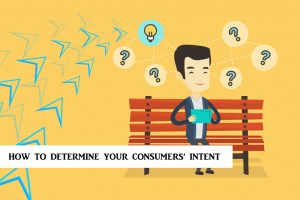Holistic Email Marketing CEO Kath Pay shares tactics for getting the most from “the original push channel.”
Most marketers have some kind of email program, but are they emailing with a purpose? At the second day of MarTech, Kath Pay, CEO of Holistic Email Marketing, showed how testing emails can improve customer engagement and boost conversions.
Not all marketers are fully invested in testing, in Pay’s experience. “If they’re testing, why are they testing?” she said. “Sometimes the answer is simply because we think we should. It’s not because they actually have that passion for learning, that passion for making incredible uplifts and insights.”
Testing the truth
“Email is one of the few push channels and it’s the original push channel,” said Pay. “And what that does is it gives a point of amazing advantage when it comes to certain factors, including testing.”
She added, “If you keep on doing the same things over and over, you’re going to get the same results.”
Email is a customer-centric channel where the copy and other content can speak directly to what a customer is looking for from your brand. It will yield valuable results because the interactions get at a deeper level of truth than, for instance, customer responses to surveys.
“People tend to answer [questions in surveys] to the ideal self, so they’re answering it to a self that they’d like to think that they are, or the self they’d like to think that they will be,” said Pay. “They’re not necessarily answering it to the reality of who they currently are. And so that means you have to take their answers to an informed survey with a grain of salt.”
It’s much more effective to see how customers engage with emails. “Monitoring what they’re clicking and what they’re not clicking, how they’re acting, how they’re engaging with your content, your emails and everything..that’s actually getting to the truth of the matter, what they’re really thinking,” Pay said.
From database to email
There are many digital touchpoints where people can engage with your brand, including on your website, of course. However, many of those who are engaging aren’t necessarily your customers. Your customers, instead, sit in your database. And they should be engaged with email, said Pay.
“Your database is your target market,” she explained. “It’s made up of first-time buyers, the customers you’re onboarding, the customers who are interested. It’s made up of your second-time buyers, your loyal customers or those customers who have gone away and they’re no longer buying.”
She added, “What your database is, is a whole heap of different life stages that we can actually try targeting within our testing.”
Natural fit with A/B testing
Testing with email yields timely results, it’s high cost-effective and provides the marketer with the ability to test segments, life stages and personas that make communicating with customers more strategic.
“With email we are not having to pay to drive audiences to that landing page, to that PPC ad or social media ad or anything,” Pay said. “We actually have that audience there in their house and we don’t have to pay for that.”
Since all the customers you have are there in your database, at some point in the lifecycle, or as part of a particular segment, using testing to email them should be done scientifically to gain the best results.
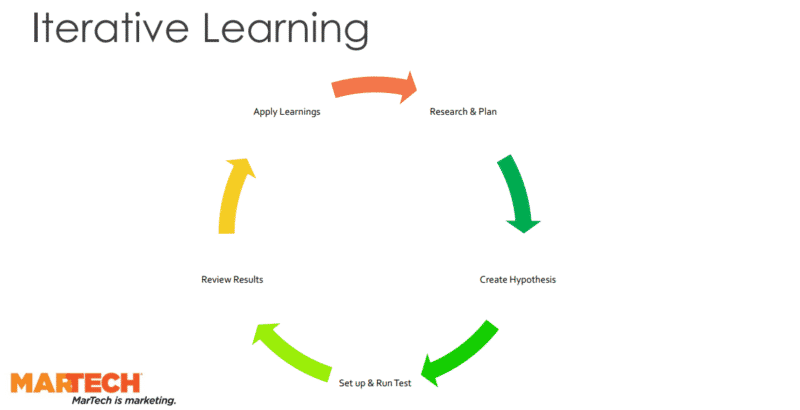
“We tend to only try to gain an immediate uplift in what we’re testing,” Pay explained. “But what we want to do is go a little bit further than that and do what I call ‘holistic testing’ which is very much scientific testing.”
She added, “We do very much want to see where A gets an uplift over B, but the second objective we want to be running the test for is so we can gain longer longitudinal insights into your customers. That gives us the opportunity to iteratively improve.”
Gaining further insights through scientific, holistic email testing allows marketers to broaden the scope of insights by improving the email strategy from one campaign to the next, and to roll these insights out to other channels when engaging customers.
Testing a hypothesis
As you test different features within your emails to customers, you want to make sure that your brand is actually learning from one email to the next. To achieve this, make the hypothesis clear. That’s the “A” that your email is testing, accordion to Pay. For instance, you might suspect that a short provocative subject line will get more engagement than a more detailed subject line. If the shorter one is proven to work better, future emails should also follow that format.
Also, when results come in, you need to be able to make sure you can rule out other factors that would drive the results you’re seeing.
“You want to be running multiple tests,” Pay said. “And the reason why is because you want to be ensuring that [the results are] not just an anomaly, that there wasn’t something that happened with the weather, or politics, or something in the world or nation that muddied the results.”
After reviewing the results and making sure they’re clear of anomalies, you can then formulate recommendations based on your findings. Apply those recommendations to future campaigns to continue learning more, built on the experiences of the previous rounds.
Moving beyond individual campaigns
As more insights come in about what features of an email work best with specific customer segments, these insights can also be plugged into more extensive automated email programs.
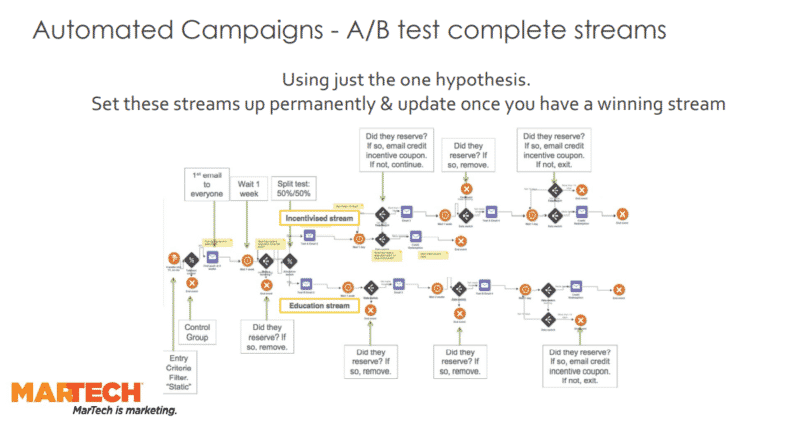
“I recommend that when you’re setting up an automated program for email that you set up two streams,” said Pay. “And these are permanent streams, but of course the content and the hypotheses are going to change.
Elements in an email that can be tested include subject lines, special offers stated in the email, images and other assets. The key part of the hypothesis is the link or cause that drives the desired result, that actually converts your customer. A marketer should formulate the hypothesis by saying that the customer will respond favorably “because” of the particular factor you’re testing.
“Once you get a winning result, and this will be based upon time, as opposed to just the volume of emails (in a single campaign), then you’re going to update the hypothesis and replace the losing stream with a new stream that’s supporting your next hypothesis,” she said.
Tracking these results and incorporating them into future hypotheses will enable marketers to break their customers down into better segments and appropriate life cycle stages to drive even better conversions.
Watch the full keynote talk from MarTech here (free registration required).
The post How testing can give your email marketing a conversions boost appeared first on MarTech.
(31)
Report Post

